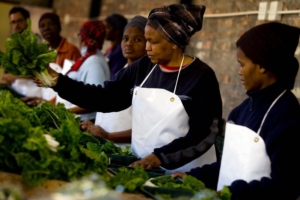 Rates of poverty in South Africa are high; the estimated percentage of the population living under the poverty threshold of $3.20 a day is 37.12% in 2022. According to the U.N. Sustainable Development Report, in South Africa, significant challenges remain in moving toward zero poverty and the country is regressing in its quest to reduce poverty. One of the major and most visible manifestations of extreme poverty is homelessness. No official census exists on rates of homelessness in South Africa, however, estimates indicate that up to 200,000 people in the country live without the basic human right to shelter.
Rates of poverty in South Africa are high; the estimated percentage of the population living under the poverty threshold of $3.20 a day is 37.12% in 2022. According to the U.N. Sustainable Development Report, in South Africa, significant challenges remain in moving toward zero poverty and the country is regressing in its quest to reduce poverty. One of the major and most visible manifestations of extreme poverty is homelessness. No official census exists on rates of homelessness in South Africa, however, estimates indicate that up to 200,000 people in the country live without the basic human right to shelter.
Unemployment Rates in South Africa
Unemployment rates in South Africa have increased in recent years, rising from 24.3% in 2020 to 28.8% in 2021. With scarce employment opportunities to secure an income, people are plunged into poverty. This, in turn, leads to higher rates of homelessness in South Africa at large. A survey conducted by the Unit for Street Homelessness at the University of Pretoria in collaboration with the Tshwane Homelessness Forum and the City of Tshwane in October 2022 found that unemployment was the primary reason for the high number of homeless people in the City of Tshwane, Pretoria.
The Role of Apartheid
The apartheid era plays a significant role in the issues of homelessness and landlessness that have been affecting South Africans. During apartheid, the government forcibly removed non-whites from their lands and pushed them into subpar neighborhoods known as “townships.”
But, decades since the abolishment of apartheid, “land distribution and economic inequity remain unresolved,” Africanews reports. Since 1994, the end of the apartheid era and the beginning of the first democratic elections, the South African government has been trying to address the housing crisis by providing low-income families with homes funded by the state. The government has constructed more than 3 million low-cost houses since the end of apartheid to address the need for housing, but the affordable housing shortage still amounts to about 3.7 million houses.
Close to 13% of South Africans live in shacks or informal settlements, according to 2019 data from the government. People from rural areas have migrated to urban city centers for better job opportunities and access to quality schooling and health care services. But, the infrastructure in these cities has struggled to keep up with increasing population numbers.
Homelessness in South Africa’s Two Wealthiest Cities
South Africa is a country of great economic disparity. Johannesburg, located in the North East of the country, is the country’s wealthiest city. Cape Town, nestled on the West Coast, is the country’s second-richest city. Together, the cities share a private wealth of more than $400 billion.
Despite their wealth, rates of homelessness in Johannesburg and Cape Town are high. Johannesburg has an estimated 15,000 rough sleepers, according to local media outlet GroundUp, and Cape Town has more than 5,000 homeless people. Unemployment rates and a lack of adequate and affordable housing for the poor in these cities contribute to the unequal distribution of wealth, made visible on the streets. South Africa has the largest gap between rich and poor in the world. According to TIME magazine in 2021, 85% of the country’s wealth is owned by the wealthiest 10% of the population, a result of apartheid as “the world’s most egregious racial divide has turned into its most extreme economic disparity.”
Taking Action
A remedy to homelessness in South Africa is affordable housing and accessible shelters, particularly in Johannesburg and Cape Town. The Johannesburg Homelessness Network is a charity that offers a space to stay for homeless people in the city. The organization takes a multidimensional approach to helping the homeless, providing mental health support and medical care as well as shelter.
Launched in 2018, Cape Town’s program, Safe Spaces, also offers low-cost, secure shelter for the homeless and access to basic health services and amenities. The City of Cape Town plans to commit R77 million in 2023 and R230 million for the next three years, totaling a 62% increase in funding, toward the Safe Spaces program to help homeless residents, according to Mayor Geordin Hill-Lewis.
Considering the facts, consistent government efforts could prove vital in alleviating poverty and homelessness in South Africa and enable affected citizens to access better living standards.
– Eloïse Jones
Photo: Flickr

 On March 8, 2023, the International Committee of Jurists (ICJ) with UNAIDS and the Office of the High Commissioner for Human Rights (OHCHR) launched a new set of expert jurists’ principles called the
On March 8, 2023, the International Committee of Jurists (ICJ) with UNAIDS and the Office of the High Commissioner for Human Rights (OHCHR) launched a new set of expert jurists’ principles called the 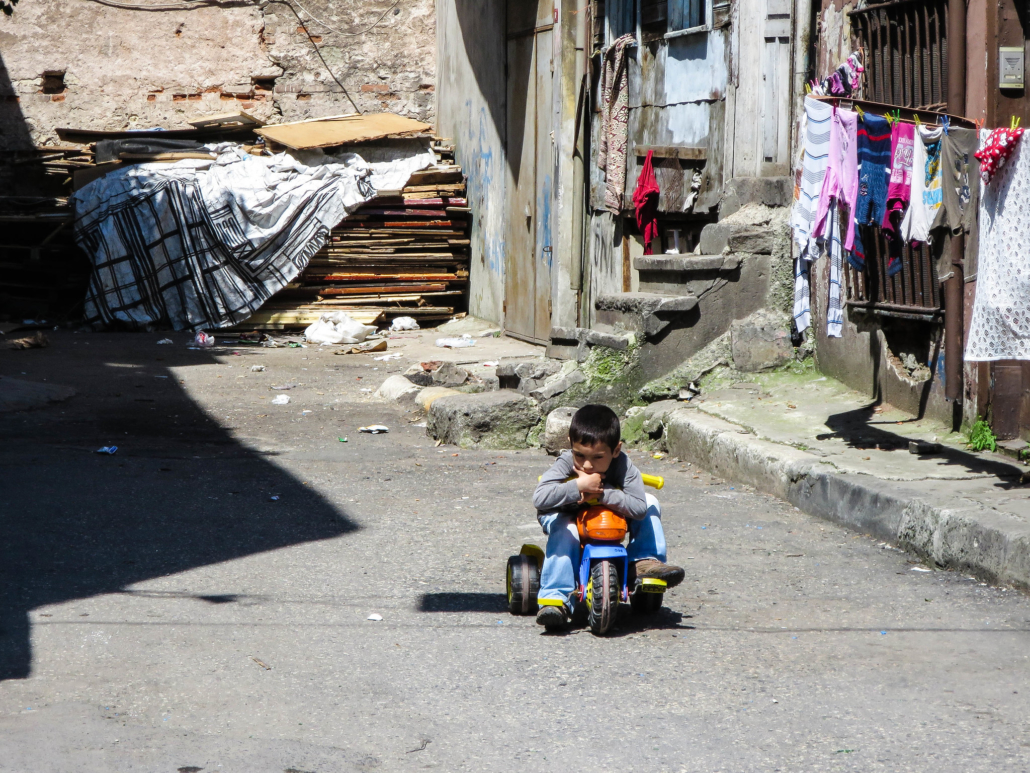

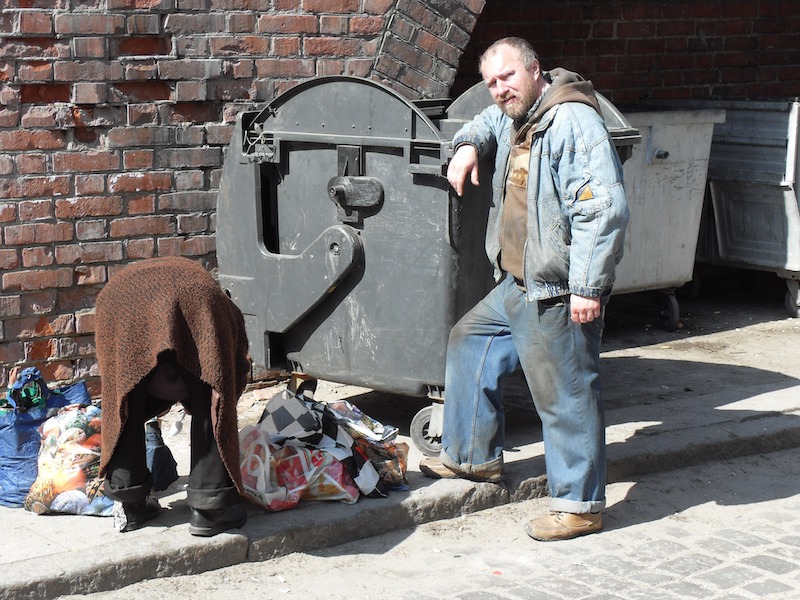
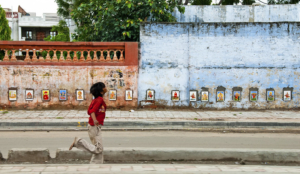
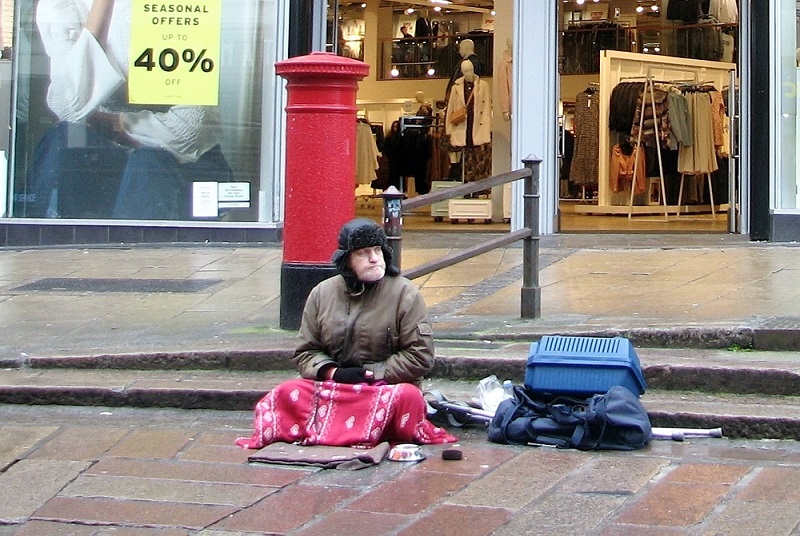 On July 15, Crisis announced broadcaster Ayo Akinwolere and actress Imelda Staunton, two award-winning stars, became the
On July 15, Crisis announced broadcaster Ayo Akinwolere and actress Imelda Staunton, two award-winning stars, became the  Period poverty means a woman or girl is unable to afford sanitary products to properly manage menstruation. In 2017, research showed that a
Period poverty means a woman or girl is unable to afford sanitary products to properly manage menstruation. In 2017, research showed that a  Portugal already suffers from significant poverty and the recent COVID-19 pandemic is exacerbating these struggles. Prior to the pandemic, a fifth of the population, or approximately two million people, were considered at risk of poverty or social exclusion. The pandemic pushed around 400,000 people below the poverty line. Additionally, it increased the at-risk-of-poverty rate by 25%. However, Portugal’s two new poverty projects, formed within the last two years, work to significantly mitigate Portugal’s poverty problems. The projects address two main problems within Portugal: homelessness and child poverty. In addition, these two projects plan to ambitiously confront these features of poverty beyond the pandemic to offer sustainable poverty reduction in Portugal.
Portugal already suffers from significant poverty and the recent COVID-19 pandemic is exacerbating these struggles. Prior to the pandemic, a fifth of the population, or approximately two million people, were considered at risk of poverty or social exclusion. The pandemic pushed around 400,000 people below the poverty line. Additionally, it increased the at-risk-of-poverty rate by 25%. However, Portugal’s two new poverty projects, formed within the last two years, work to significantly mitigate Portugal’s poverty problems. The projects address two main problems within Portugal: homelessness and child poverty. In addition, these two projects plan to ambitiously confront these features of poverty beyond the pandemic to offer sustainable poverty reduction in Portugal. Ireland has been working to reduce homelessness and improve emergency services for its disadvantaged citizens for years. Current structures and policies help the homeless but leave out the struggling youth. The forgotten young people of Ireland have been ignored by social housing programs and blocked from receiving full welfare payments. To end youth homelessness in Ireland, the government is looking at the gaps in policies that allow young people to slip into poverty.
Ireland has been working to reduce homelessness and improve emergency services for its disadvantaged citizens for years. Current structures and policies help the homeless but leave out the struggling youth. The forgotten young people of Ireland have been ignored by social housing programs and blocked from receiving full welfare payments. To end youth homelessness in Ireland, the government is looking at the gaps in policies that allow young people to slip into poverty.